Two species of seal live in the UK and can be seen around our coasts and saltmarshes.
Both of these species are regularly spotted alone foraging for food in the water or in larger groups hauled out on sand, mud or rocks.
But how can you tell common and grey seals apart? International conservation charity Zoological Society of London's (ZSL) marine experts explain all…
Common seal (also known as harbour seal)
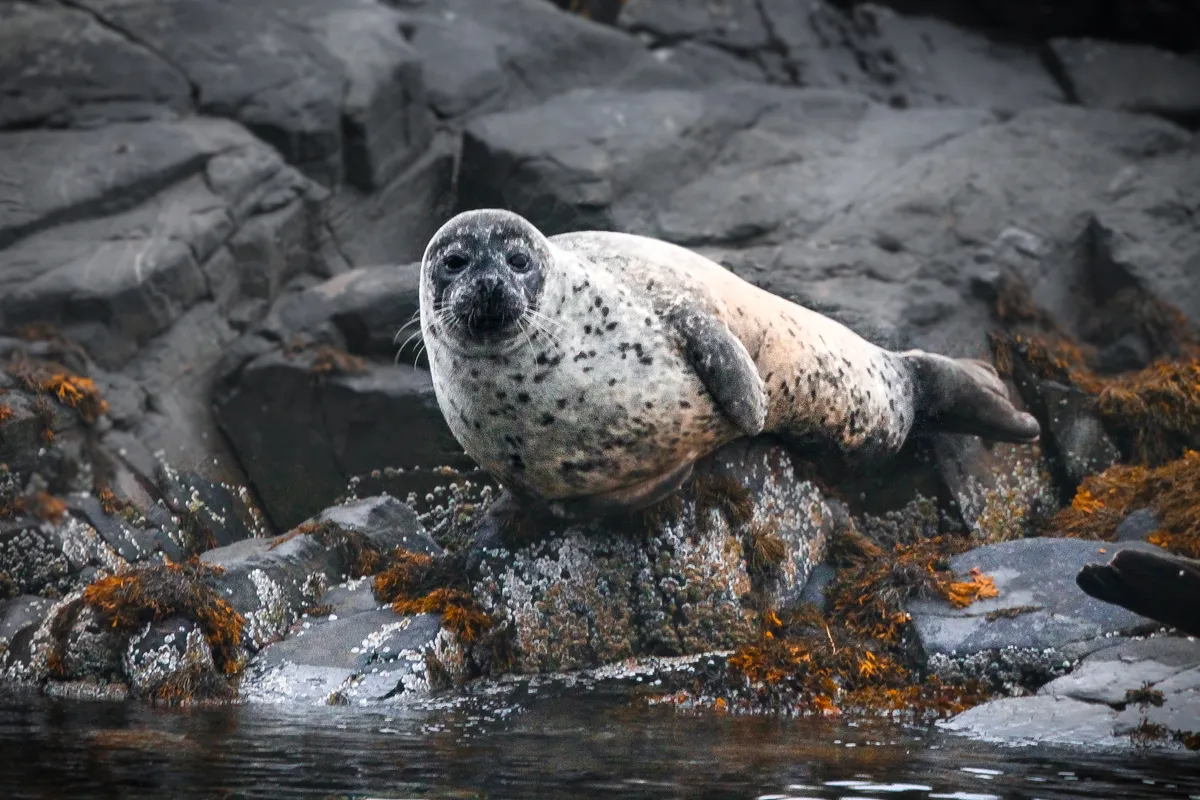
Scientific name: Phocina vitulina
Size: Up to 100kg and 1.6m.
Head: Concave head profile, with a short muzzle; similar to that of a dog.
Nostrils: V-shaped, that meet at the bottom.
Colour: Light brown/ grey, however in the Thames estuary they can be a bright orange, as their fur is died by the iron rich mud.
What to look for on land:

Although seals feed and travel in water, they spend much of their time hauled out or resting on land. Common seals are often found in a distinctive ‘banana’ position with their head and tail up.
They maintain space between individuals when hauled out or resting on the shore and can been seen expressing aggressive behaviours like growling and headbutting if other individuals infringe on their space.
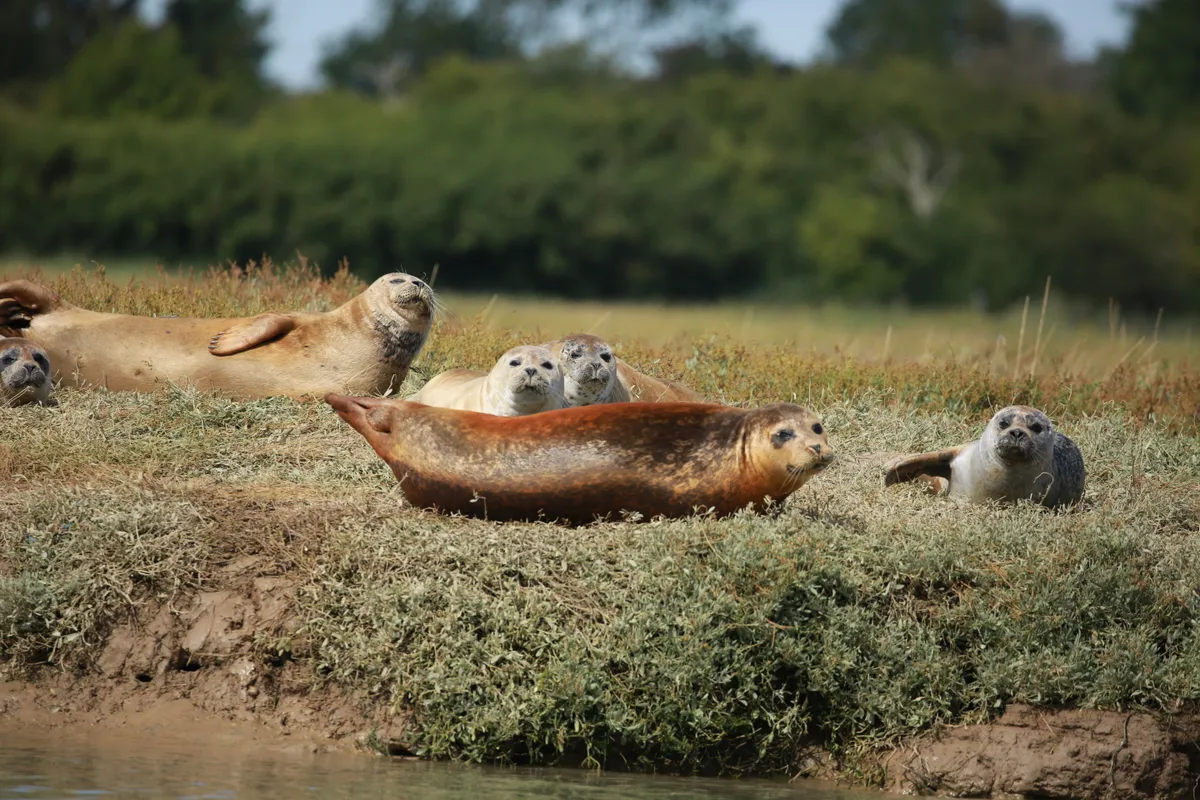
What to look for in the water:
The round head and short nose profile will be the most distinguishing feature while swimming.
Where to find common seals:
The majority of haul out sites (areas where seals come out of the water to rest, interact socially and pup) are found along the Scottish coast, with additional populations in The Wash, the Thames and Strangford Lough, Northern Ireland.
Common seals tend to be found in smaller groups up to 20-30 individuals.
Pups:
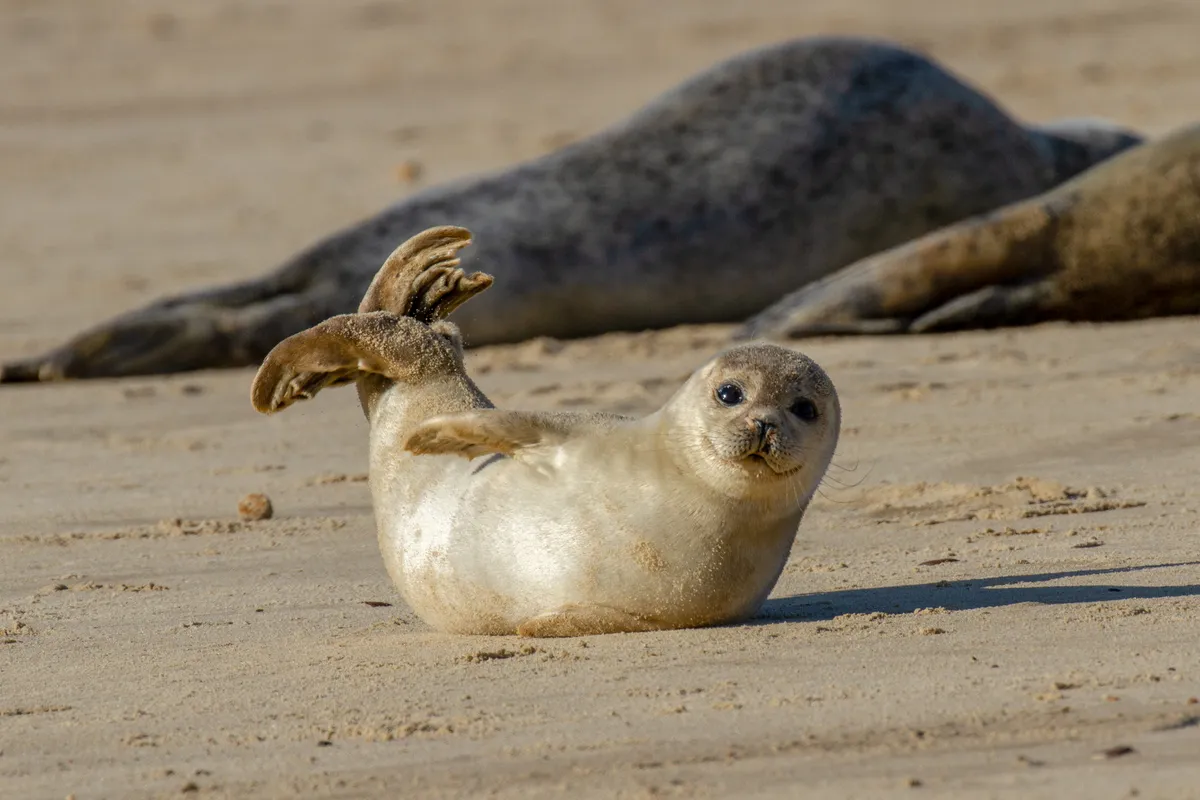
Primarily born during June and July. The pups moult in the uterus and are therefore born with a brown coat, ready to swim. Because of this common seals can breed in tidal areas, such as estuaries and can be seen swimming and diving with their mother just hours after birth.
Grey seal
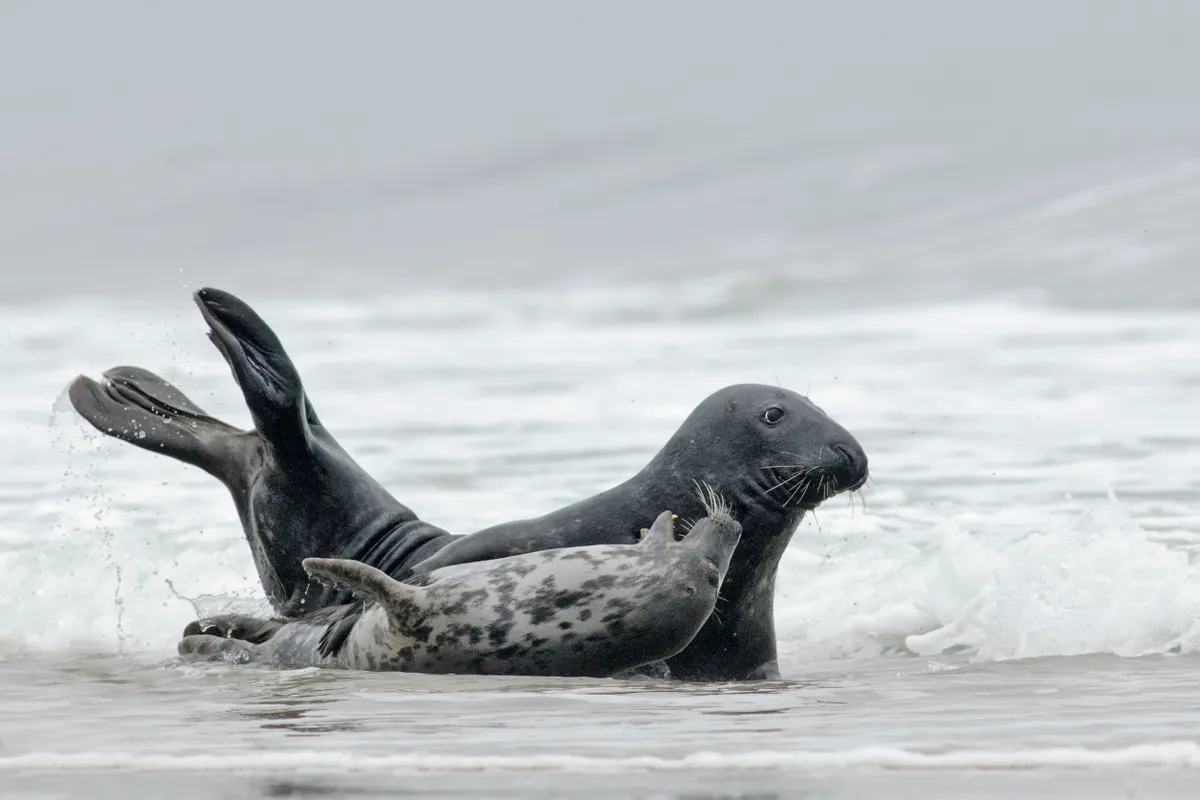
Scientific name: Halichoerus grypus
Size: Up to 300kg (males), 200kg (females) and 2.5 m; males noticeably larger than females.
Head: A flat head profile, often referred to as “the roman nose”, and an elongated muzzle.
Nostrils: parallel nostrils that do not meet.
Colouring: brown/ grey mottling. This mottling can be a distinctive between the two species.
What to look for on land:
Like common seals, grey seals often haul up to rest on land. In general, they sit close to each other, sometime in large groups of several hundred.
What to look for in the water:
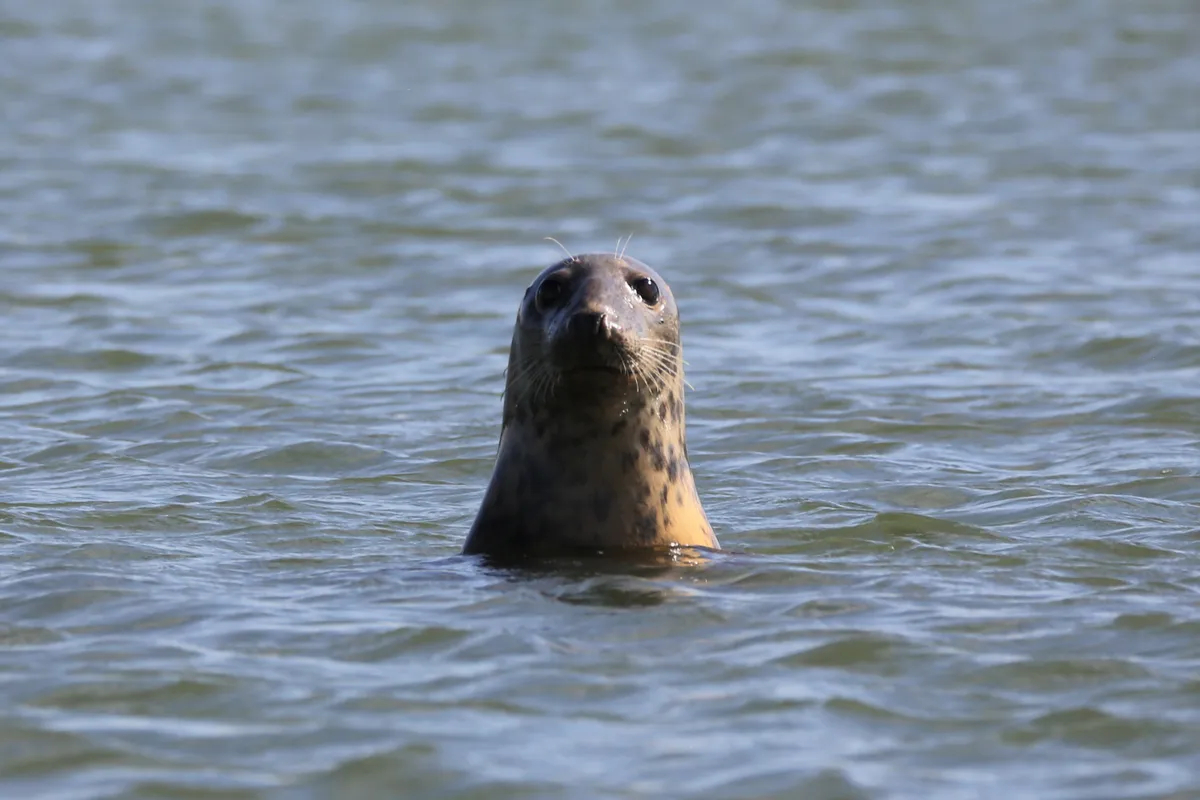
Their larger size, more elongated head profile and long nose are the most distinguishable identifying feature in the water. They also venture further out to sea to forage.
Where to find grey seals:
Grey seals are found around the whole coast of the UK and as they travel further when foraging, they can often be found out at sea and in estuaries such as the Thames, where they don’t breed.
Pups:

Born in August in Cornwall, September- October in Wales and November and December in Scotland and down the east coast of England.
Grey seal pups are not as independent as those of the harbour seal and spend around three weeks suckling from their mother, followed by a few more weeks shedding their white coat which is not waterproof before joining the adults in the water. Because of this, grey seals with their white pups can often be seen on beaches.
Common seal vs grey seal
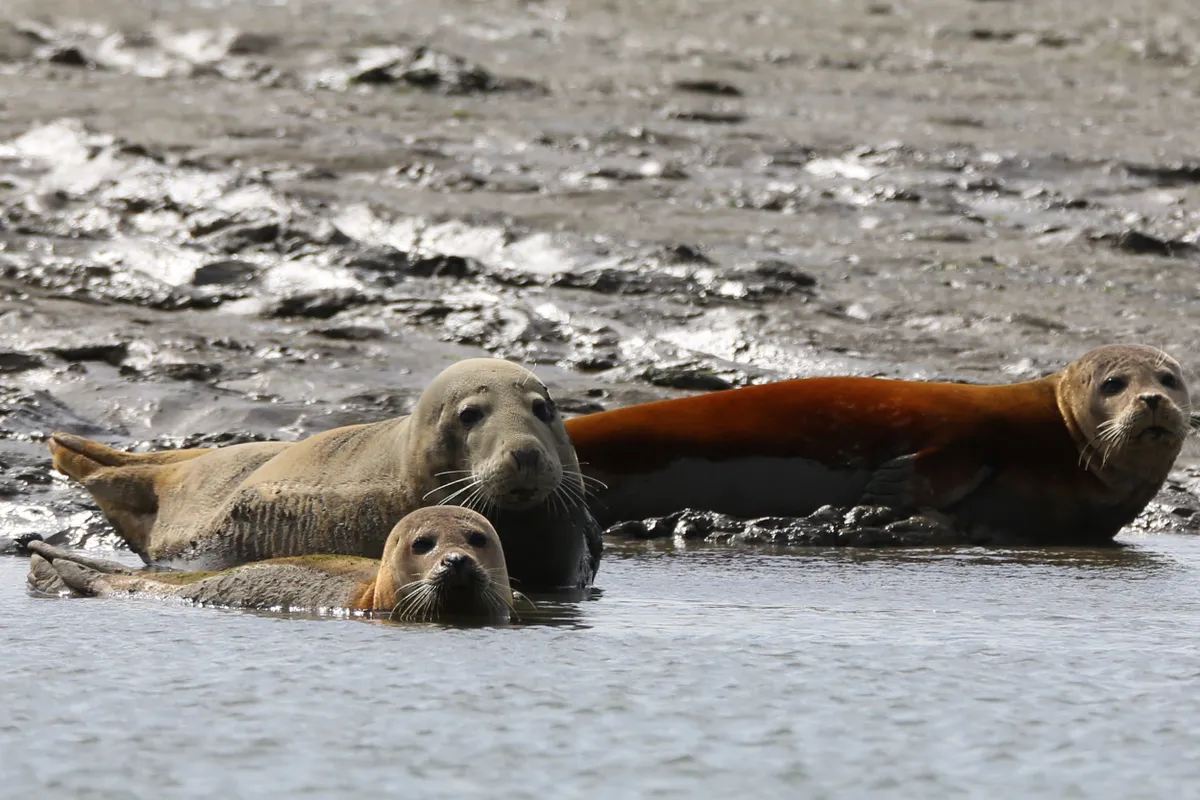
- If its eyes are close to its nose and close together it’s a c0mmon seal, as grey seal has an elongated muzzle and its eyes are set further apart
- If the head profile is concave and short, it’s a common seal; if it’s flat and elongated, it’s a grey seal
- Grey seals are bigger than common seals
- If a pup has a white coat it’s a grey seal as common seals are born with brown coats and ready to swim
What should I do if I see a seal?

If you are lucky enough to see a seal either on the water or on land, please do give it plenty of space. Seals regularly ‘haul out’, which means they sit on sand banks, beaches and rocks, to digest their food, rest and socialise.
Please try and keep at least 50 metres away, keep any dogs on leads, and never get between a seal and its pup.
Follow this code of conduct(to make sure you and the seal(s) have the best experience.
How can I help seals (in the Thames)?
ZSL has been working on restoring the River Thames and the wildlife within it, over the last 15 years. ZSL recently launched a public engagement campaign called ‘Mother Thames’ – hoping to change the poor public perception of the river from “biologically dead” to a thriving wildlife habitat essential to protect.
Along with eels, seahorses, sharks, oysters and seabass conservation projects – ZSL also conducts an annual seal survey during the summer months while seals are ‘hauled’ out along the sandbanks.
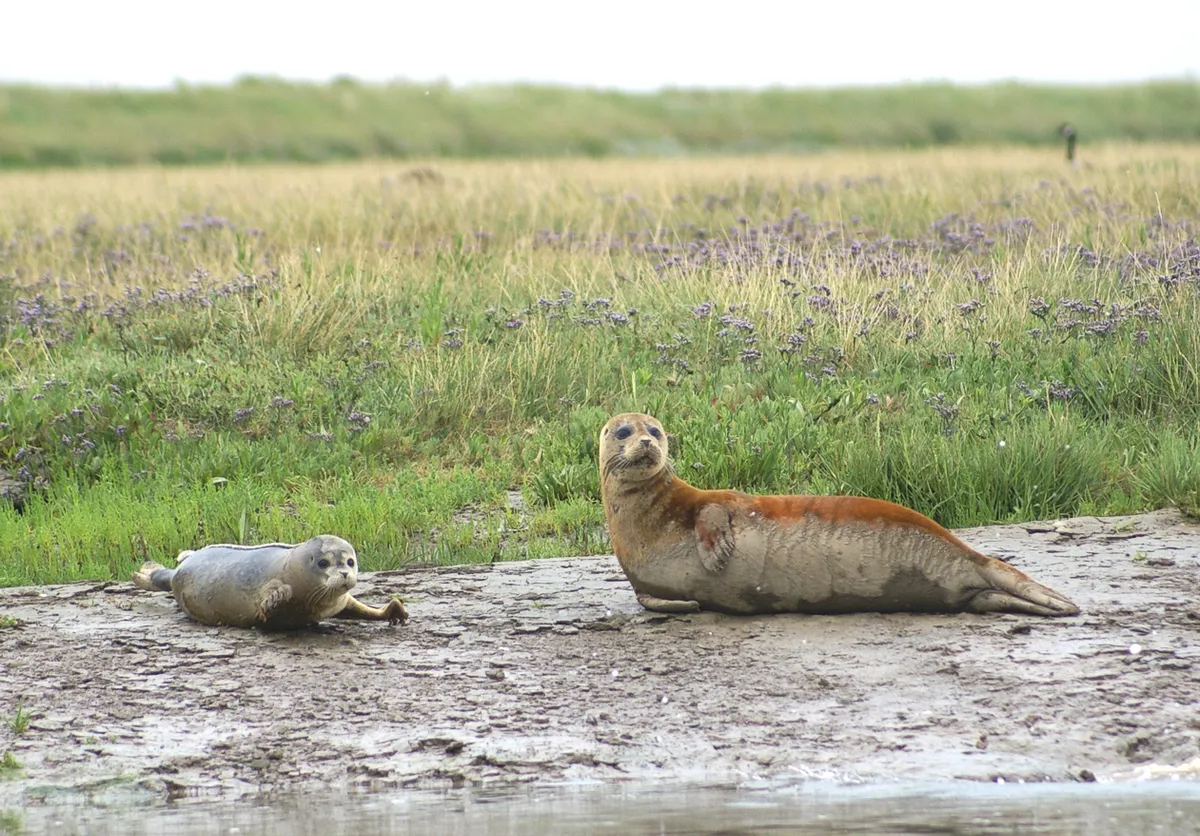
Latest population figures state that 138 pups have been born in the Thames Estuary, and overall the population is healthy and increasing. Seals are a good indicator species for improving river quality and are charismatic species, people living on the Thames, can see on a regular basis.
You can help ZSL monitor the two seal species living on the Thames by logging on to our Instant Wild ‘seal cam’, which transmits real time images to your computer from places along the Thames.
By going through these images and letting us know which ones contain seals, and how may you’ll be directly helping us to further our knowledge, to help protect these species.
Main image: Grey seal pup covering its face with one of its flippers on the beach. © Marcos G Meider/Getty
